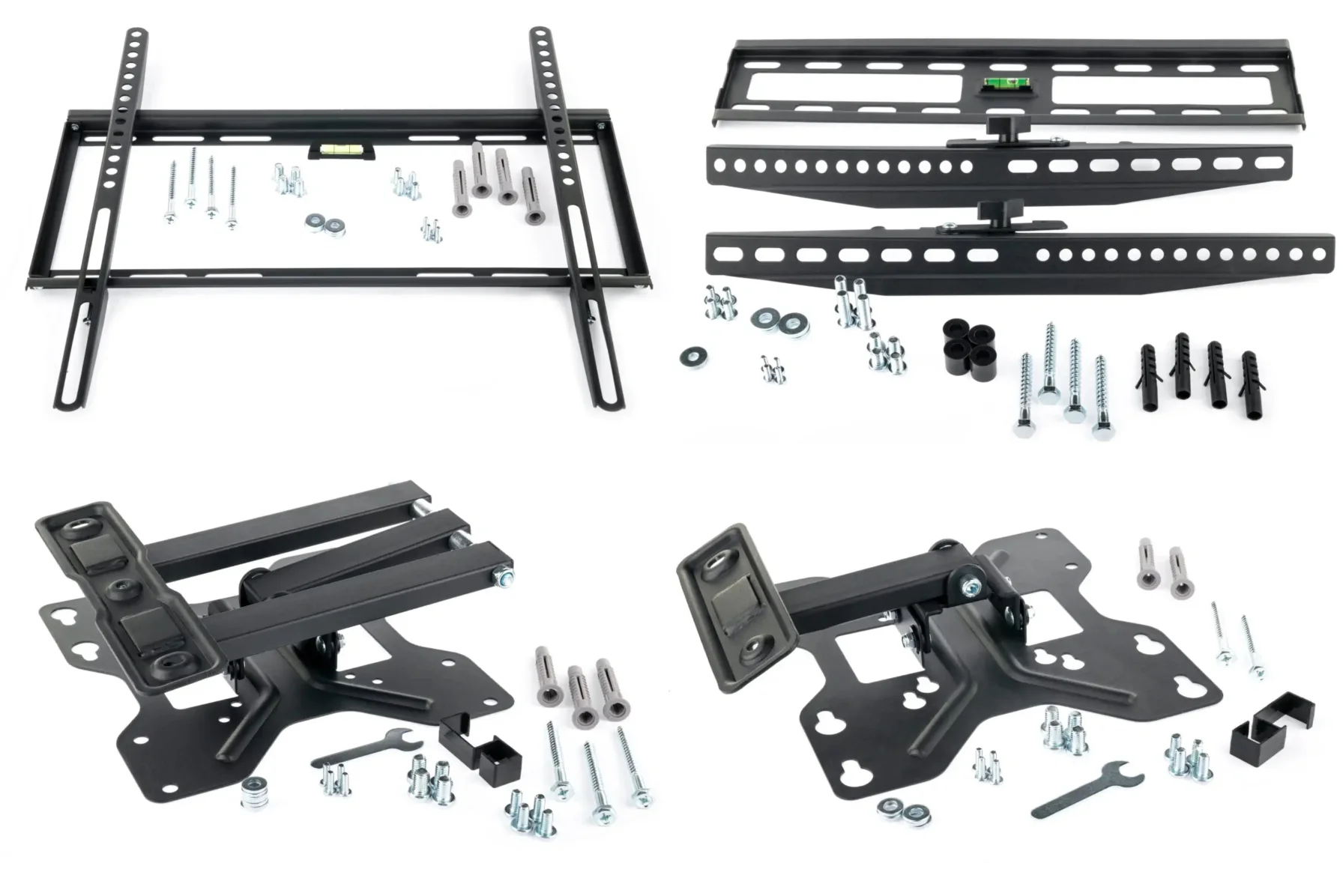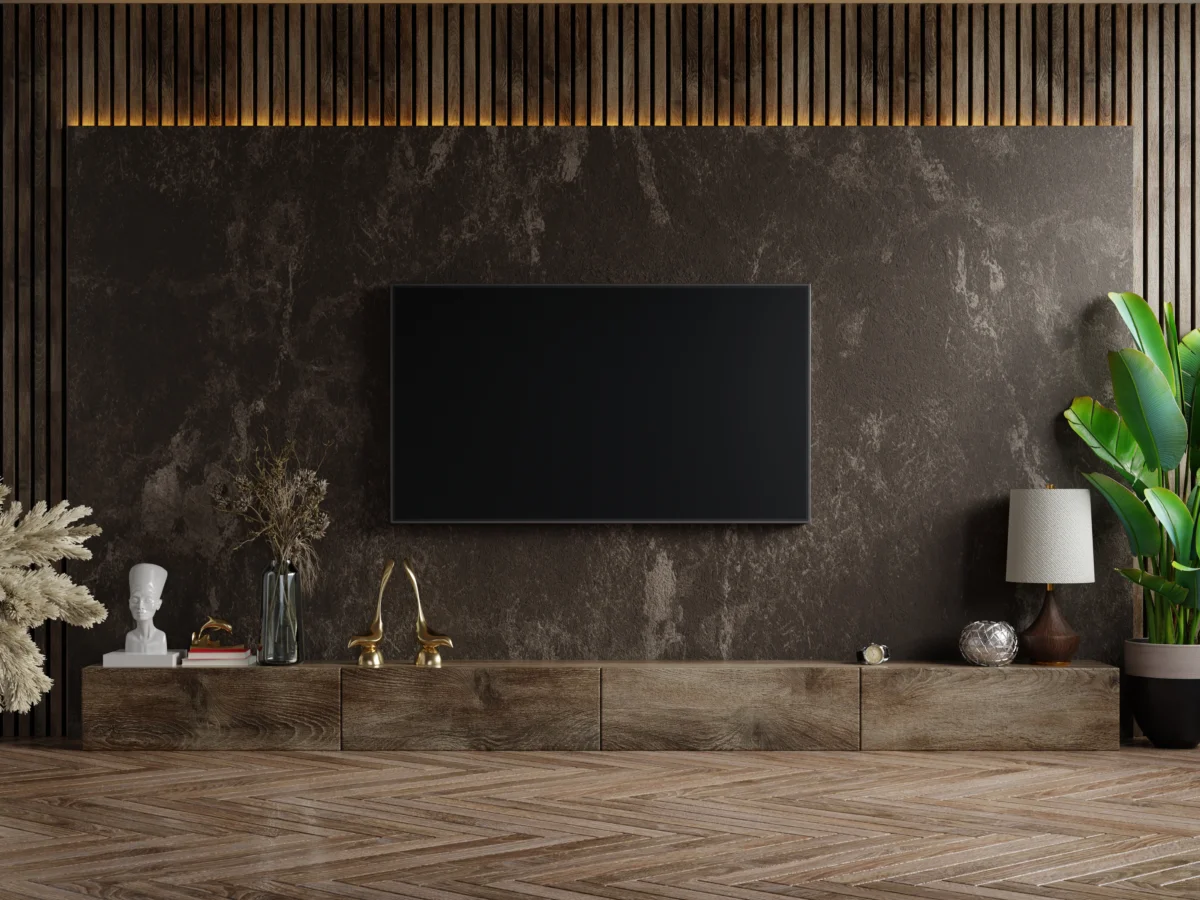tv mouting
a better viewing experience
Mounting your TV on the wall can free up floor space, create a sleek and modern look, and provide a better viewing experience. However, it's important to carefully consider the process before you start drilling holes in your wall.
Thinking about mounting your TV? Here are some things to consider first
Today, more people are mounting their TV instead of setting it on a TV stand. What many homeowners don’t realize until they get started is, TV Mounting is often far more complicated than it looks and there’s a lot to consider before mounting it. The team here at MS Installations has put together this guide to help customers identify the key considerations as they decide if TV mounting is right for them. When done right, TV mounting provides a clean, safe and very satisfying display. If at any point you decide that you want help, our professional TV Installation team in Frisco is here to help.
where to
place the tv
The biggest concern is likely where to place the TV. TVs should be out of direct sunlight, positioned so it’s easy to see the screen, and attached to the wall securely to prevent falling. Consider the layout of the room carefully before beginning. If the TV has been in place on a TV stand until now, it may be easier to determine where in the room the TV should go. For best results, keep it far from where people may walk, away from the windows, and away from any young children or pets to prevent any potential issues.
pay attention to the height
Mounting a TV over the fireplace has been done for many years, but unless the top of the fireplace is lower than average, this may not be a good idea. If the TV Mount is too high, it can lead to neck strain for those enjoying a show. If the TV is too low, it may not be easy to see what’s going on when kids or pets are running around the room. The ideal height is high enough off the ground without being too high, but that can vary based on the size of the TV. A good rule of thumb is to have the base of the TV around 25 inches from the floor.
reduce the glare on screen
Glare makes it a lot more difficult to see the TV and can lead to eye strain. Reducing glare is best done by putting the TV in front of the windows, but this isn’t always possible to do. Position the TV where it will be easily viewable and consider ways to block the light from the windows when the TV is on. Consider where the lights are, as well, and make sure the TV is positioned so the lights don’t cause glare on the TV when it’s on. If they do, it may be necessary to have the lights off when the TV is on.

types of mounting hardware
The two most common types of mounting hardware are the standard mount and the swivel mount. With a standard mount, the TV is flat against the wall and stays in that position. If the mount swivels, the TV can be adjusted for better viewing. The amount of swivel can be limited, depending on the specific TV Mount that’s purchased. If glare is a concern and it’s not possible to move where the TV is mounted, being able to swivel the screen may help. On top of whether or not it swivels, it is necessary to make sure the mounting hardware is compatible with the TV. The mount must be able to handle the weight of the TV, which can be an issue with the larger TVs available today. VESA numbers should be available for the TV and should match the available options on the mount. The screws go through the mount and into the TV using the VESA pattern, so if these numbers don’t match, the mount will not work for that TV.
hang it tight
Mount placement is key. Drywall's a no-go, so find wall studs with a stud finder (cheap!). But beware: off-center studs and steel alternatives can bring headaches. Consider carefully to avoid a TV tumble!

Once your TV hangs proudly, those unruly cables can bring the whole aesthetic crashing down. But fear not, there are ways to make them vanish like magic (or at least look pretty darn good).